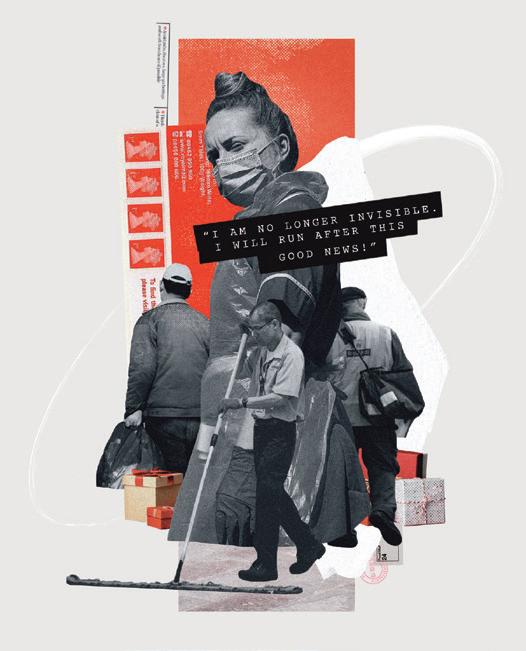
3 minute read
Anatomy of a Bible Resource
by Lifewords
Anatomy of a Bible Resource
Words by Steve Bassett
When William Walters founded Scripture Gift Mission in 1888, he believed that a proffered gift of an attractively produced copy of one of the Gospels, with a “winsome word of testimony”, was a sure means of evangelism. This combination of outreach, Scripture and artistic excellence has continued through to today, 133 years later.
Formats and technologies may have changed, but the anatomy of each Lifewords resource still contains the same DNA, namely: the Bible’s own words set in an aesthetic framing; a resonance with readers’ lives; a resource that is released, freely, into a contemporary context, providing ways into Scripture for all people.
RESONATING WITH THE TIMES
To explore how this tradition plays out today, let’s consider our newest Bible booklet, The True Light, released across the UK and beyond throughout advent 2020. Creating a Christmas resource in the context of a global pandemic was not easy, but our challenge is always to tell the story in a way that resonates with the times. Advent loomed in a world where for many, there would be an empty chair at the Christmas dinner table; or exhaustion from fi ghting for justice to prevail, or from working fl at-out to comfort the sick 24/7. A world where people were locked down, their mental health suff ering; where pressures on the economy, stress on the NHS and essential workers, and fear among the most vulnerable all added to the feeling that this was a haunted festive season, a Christmas unlike any other. This was the context where the Bible’s message of goodwill to all and peace on earth needed to resonate. In line with Walter’s vision for people to connect with the Bible’s message, we worked on both a physical booklet and an online format, inviting people to refl ect – and journal – on where “the true light” would fi nd them. On a local church level, it needed “shareability” online and in real life, as much as might be possible with Covid-19 restrictions. And, it could be an individual resource for people to engage with personally, to refl ect and make their own connections with the text.
A VITAL MESSAGE
The idea came to build the text around verses describing intersections between God’s heralding of the coming Prince of Peace and those who were the initial recipients of that news. These “glad tidings” came to everyday people in a range of contexts, very often along with the assurance of “Don’t be afraid”: what a vital message right now! Where and among whom did this message come to earth, become grounded? In the text, we read of shepherds doing their vital, physical work in the open air: the message eff ectively came to a group of key workers. How could we root that in our storytelling? Perhaps a nurse coming off shift after a day on a Covid-19 ward, or a shop worker, or a bin lorry crew. Then, we looked at how the Bible recounts that the True Light found people in the unexpected, in the joyful, in confusion; when we need clarity, when we feel worthless; in our desperation, grief and exhaustion. There were characters and places that refl ected all this – Mary, Elizabeth, Joseph, the shepherds, Magi, Rachel, even lowly Bethlehem itself.
These links formed a core arc for the telling of the story. Still, every booklet needs a “capstone”, and for this one it was the wonderful lyricism of John 1, book-ending the narrative with the True light coming in to the world: “And we have seen his glory, the glory of the Father’s one and only Son” (John 1:9-14 NLT). Give thanks for how the Bible is always relevant and connects with our lives.

Praise God for the resources Lifewords has to communicate good news.
Pray for those who read The True Light at Christmas – ask that God would continue to speak to them.
This article is adapted from a longer piece – visit www.lifewords. global/blog to read more. read more.






